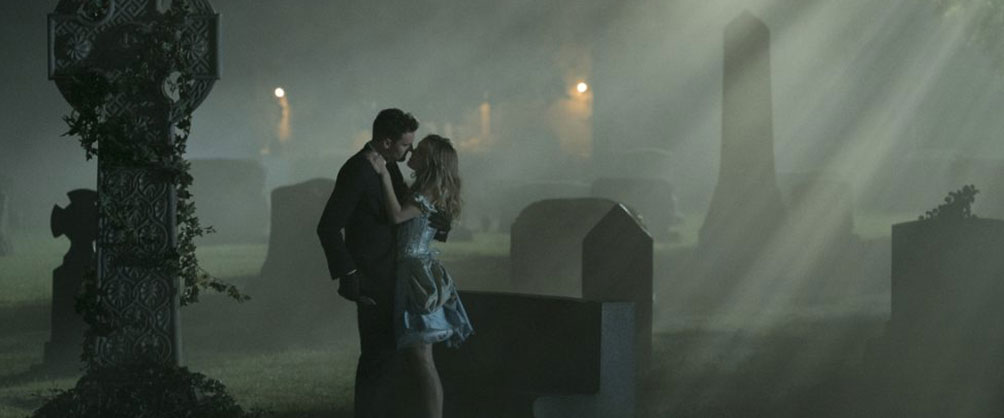Gardner Discusses What it’s Like Working on a Horror Series, The Challenges of Into the Dark, and What’s Next for Him
‘Tis the season of haunted houses, witches, and creepy clowns.Hulu is kicking off October with a scare, premiering the Blumhouse produced original series Into the Darkthis Friday, October 5th. Into the Darkis a year-long horror anthology series featuring 12 tales, each inspired by a holiday from the month in which it will be released.
Before tackling two of the feature length episodes of the series, Chief Lighting Technician Dustin Gardner realized that he wouldn’t be working with much of a budget, as is the case with most horror shows/features. With that said– versatility would be key. He would need to utilize lighting sources that could serve multiple purposes, and play out in various challenging scenarios. This isn’t unfamiliar territory for Gardner, as he has been faced with such tasks on previous smaller budget horror features in the past, such as The Watcher, and Insidious: The Last Key.
The first episode Gardner worked on, “Flesh and Blood”, is a single camera horror film shot almost entirely in one house. Production wanted to keep the lighting budget as low as possible, so it was decided in prep that they would hire a licensed electrician to do a tie in at the house. Power was managed carefully for the roughly 15 days Gardner and crew were in the house. LiteMats would become a key asset for this interior. “Utilizing LiteMats in the house was crucial, and when diffused they give off an effect of a chimera with very little depth. I retrofitted all of them with hard black honeycomb grids of varying degrees to control where the light was going,” says Gardner. He adds, “We also had a few battery powered LiteMats dimmed wirelessly for close up shots during intimate/emotional scenes where I didn’t want to send a tech in to make adjustments.” For car interior sequences, Gardner rigged together battery powered LiteMats, 120 X6 Hybrid LiteRibbon, and 60 X6 Hybrid LiteRibbon.
“Treehouse”, the second episode Gardner worked on, provided a different set of obstacles. This time around, power was not an issue. The crew had multiple generators and plenty of power distribution. The main challenge Gardner and crew were met with was that “Treehouse” was shot via multi camera, but with the same manpower allocation as “Flesh and Blood.” “So, now I am up against a different struggle,” says Gardner. Without the extra manpower the lighting team relied on lots of batteries. Gardner adds, “This is where the 12V S2 LiteMats came in handy because they can be used with common 12V sources as well as the rechargeable flatpacks.” With this setup, Gardner and his team didn’t need to worry about cable runs. It also created less stinger cabling that needed to be dressed and hidden from both cameras.
Garder and crew also used LiteTile on “Treehouse” for a few different setups. In one instance he needed a really bright source in a tiny space (the corner of a front porch while cross coverage was being shot). “It was pretty bright out and we were able to squeeze the LiteTile just out of frame and diffuse it,” says Gardner. It worked well with the warm background, and the team was able to keep tons of the highlighted detail into the backdrop of the shot.
As for what’s next for Gardner– lately, he’s been keeping himself busy with a number of commercials and short films. He most recently worked on a bunch of spots for NFL Sunday Pass, and there are a couple features on the horizon. You can follow him on instagram @gafferdepot.
[wonderplugin_video iframe=”https://www.youtube.com/watch?v=-05aTtUr11w” videowidth=600 videoheight=400 keepaspectratio=1 videocss=”position:relative;display:block;background-color:#000;overflow:hidden;max-width:100%;margin:0 auto;” playbutton=”http://www.litegear.com/wp-content/plugins/wonderplugin-videoembed/engine/playvideo-64-64-0.png”]
